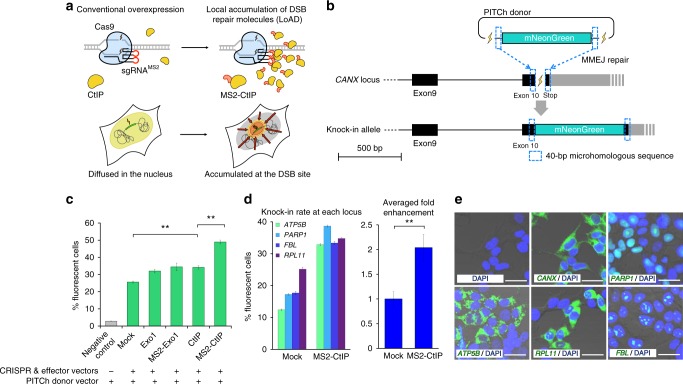Fig. 1.
Enhancement of knock-in efficiency with the LoAD system. a Schematic of conventional overexpression and the LoAD system. Effector proteins such as CtIP can accumulate at the DSB site via the interaction between MS2 RNA loop and MS2 coat protein, resulting in programmable genome editing. sgRNAMS2, sgRNA with two MS2 RNA loops. b Schematic of PITCh-mediated knock-in of fluorescent protein gene, harnessing MMEJ for the predefined, seamless gene cassette integration. This schematic only shows gene targeting in the CANX locus, but other gene loci such as ATB5B, PARP1, FBL, and RPL11 were targeted in a similar way. c Knock-in frequency at the CANX locus measured by FACS analysis. The recruitment of MS2-CtIP with the LoAD system resulted in about 50% gene knock-in without any selection. Data are expressed as means ± s.e.m. (n = 3). **P < 0.01 (Student’s t-test). d The effect of MS-CtIP LoADing was not locus-dependent. The average rate of fold activation was about 1.8-fold. Data are expressed as means ± s.e.m. (n = 3). **P < 0.01 (Student’s t-test). e The intended fluorescence localization was observed at all gene loci (CANX, endoplasmic reticulum; PARP1, nucleus; ATP5B, mitochondrion; RPL11, nucleolus, and cytoplasm; FBL, nucleolus). Bar, 30 μm

